
Phandar Valley: A Hidden Gem in Pakistan's Northern Frontier
Discover the untouched beauty of Phandar Valley in Pakistan, where emerald lakes, lush meadows, and snow-capped peaks create a paradise for nature enthusiasts and adventurers.
Nestled in the heart of Gilgit-Baltistan, Phandar Valley is a paradise for nature lovers and adventure seekers alike. The valley is renowned for its emerald green and turquoise blue waters, lush green meadows, and snow-capped peaks. As you explore this pristine region, you will be greeted by the serene Phandar Lake, which reflects the surrounding mountains like a mirror. The tranquility of the lake provides the perfect escape from the hustle and bustle of city life. Phandar Valley is also a cultural treasure trove. The local people are warm and welcoming, eager to share their traditions and way of life with visitors. You can experience the local culture by visiting the traditional wooden houses, tasting the delicious regional cuisine, and participating in local festivals. The valley is also a great place for trekking. There are numerous trails that take you through picturesque landscapes, offering stunning views of the surrounding mountains and valleys. One of the most remarkable aspects of Phandar Valley is its accessibility. Despite its remote location, the valley is easily reachable by road from Gilgit. The journey itself is an adventure, with winding roads that offer breathtaking views at every turn. Whether you are looking for a peaceful retreat, an adventurous trek, or a cultural immersion, Phandar Valley has something to offer every traveler.
Local tips in Phandar Valley
- Visit during summer (June to August) for the best weather and fully accessible roads.
- Carry warm clothing, even in summer, as temperatures can drop at night.
- Hire a local guide to explore hidden trails and learn about the valley's history and culture.
- Make sure to try the local trout fish, a delicacy of the region.
- Respect local customs and traditions; always ask permission before taking photos of people.
Phandar Valley: A Hidden Gem in Pakistan's Northern Frontier
Nestled in the heart of Gilgit-Baltistan, Phandar Valley is a paradise for nature lovers and adventure seekers alike. The valley is renowned for its emerald green and turquoise blue waters, lush green meadows, and snow-capped peaks. As you explore this pristine region, you will be greeted by the serene Phandar Lake, which reflects the surrounding mountains like a mirror. The tranquility of the lake provides the perfect escape from the hustle and bustle of city life. Phandar Valley is also a cultural treasure trove. The local people are warm and welcoming, eager to share their traditions and way of life with visitors. You can experience the local culture by visiting the traditional wooden houses, tasting the delicious regional cuisine, and participating in local festivals. The valley is also a great place for trekking. There are numerous trails that take you through picturesque landscapes, offering stunning views of the surrounding mountains and valleys. One of the most remarkable aspects of Phandar Valley is its accessibility. Despite its remote location, the valley is easily reachable by road from Gilgit. The journey itself is an adventure, with winding roads that offer breathtaking views at every turn. Whether you are looking for a peaceful retreat, an adventurous trek, or a cultural immersion, Phandar Valley has something to offer every traveler.
When is the best time to go to Phandar Valley?
Iconic landmarks you can’t miss
Baltit Fort Hunza
Discover the enchanting Baltit Fort in Hunza, a historic marvel offering breathtaking views and a glimpse into the rich culture of Gilgit-Baltistan.
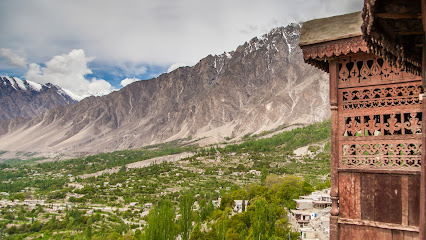
Rakaposhi View Point Hotel & Restaurant
Experience breathtaking views and delightful dining at Rakaposhi View Point Hotel & Restaurant, a must-visit destination in Ghulmet, Pakistan.

Altit Fort
Explore the historic Altit Fort in Hunza Valley, a stunning blend of ancient architecture and breathtaking natural beauty.

Kharphocho Fort
Discover the historical splendor and breathtaking views at Kharphocho Fort, an iconic fortress overlooking Skardu Valley in Gilgit-Baltistan.

Shandur Pass
Discover the breathtaking beauty of Shandur Pass in Khyber Pakhtunkhwa, Pakistan, where majestic mountains meet vibrant cultural heritage.

Soq Valley
Experience the breathtaking landscapes of Soq Valley, a hidden gem in Skardu, Pakistan, ideal for nature lovers and adventure seekers.
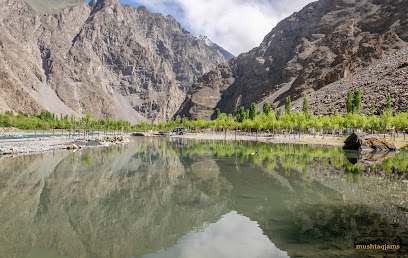
Khalti Lake
Discover the tranquil beauty of Khalti Lake, a serene oasis nestled in Phander Valley, perfect for nature lovers and adventure seekers alike.

Phander Lake
Explore the serene beauty of Phander Lake, a hidden gem in Pakistan, where turquoise waters meet majestic mountains in a tranquil setting.

Buddha De Yasheni
Discover the ancient rock carvings of Buddha De Yasheni in Gilgit, where history and nature converge in breathtaking beauty.

PTDC Phander
Experience the serene landscapes of Gilgit-Baltistan at PTDC Phander, the perfect retreat for nature lovers and adventurers alike.

Sacred Rocks of Ganish,Hunza (Haldeikish)
Discover the Sacred Rocks of Ganish in Hunza—an ancient landmark where history and breathtaking nature converge in an unforgettable experience.
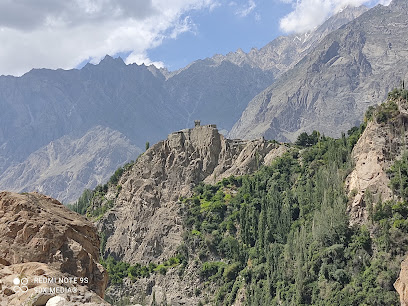
Phander Rest House
Discover the serenity of Phander Rest House, your gateway to the breathtaking beauty of Gilgit-Baltistan's landscapes.

Phander View Hotel
Discover the beauty of Phander Valley with a serene stay at Phander View Hotel, where comfort meets breathtaking landscapes.

Phander Valley
Experience the enchanting beauty and tranquility of Phander Valley, a hidden gem in northern Pakistan perfect for nature lovers and cultural explorers.

Lake Inn Phander
Discover the tranquil beauty of Lake Inn Phander, a serene retreat nestled in the breathtaking landscapes of Phander Valley, Pakistan.

Unmissable attractions to see
Phander Lake
Discover the serene beauty of Phander Lake, a stunning glacial lake surrounded by majestic mountains, perfect for nature lovers and adventurers.

Blue Lake View Resort Khalti
Experience breathtaking views and tranquil surroundings at Blue Lake View Resort Khalti, a hidden gem in the heart of Gilgit's stunning landscapes.

Hasis Valley
Experience the breathtaking beauty of Hasis Valley in Gilgit-Baltistan, where nature, culture, and adventure come together in perfect harmony.
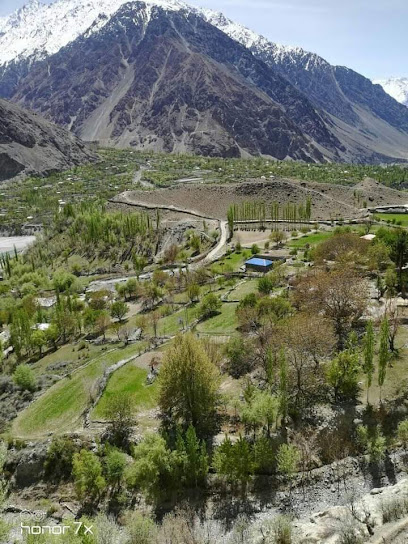
Mayna Old House
Explore Mayna Old House in Yasin Valley, a beautiful blend of cultural heritage and stunning landscapes in Gilgit-Baltistan.
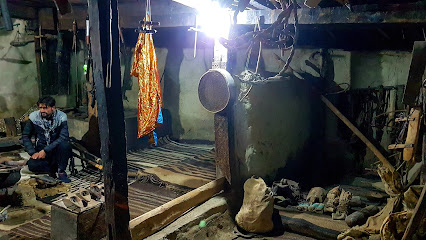
NOH Fort
Explore NOH Fort in Yasin Valley: A blend of history and breathtaking landscapes in Gilgit-Baltistan.

Hot springs
Discover the therapeutic hot springs of Khouzh in Chitral, a serene escape for rejuvenation amidst breathtaking landscapes and rich culture.

Essential places to dine
SHAHI DEWAN
Discover the rich flavors of India at Shahi Dewan in Skardu – where authentic cuisine meets breathtaking views.

Paradise Hotel & Restaurant, Gilgit
Discover culinary delights at Paradise Hotel & Restaurant in Gilgit - where exquisite flavors meet breathtaking river views.

Pizza Pamir
Discover the best pizza experience in Hunza Valley at Pizza Pamir—where fresh ingredients meet breathtaking views.

Yak Grill
Discover Yak Grill in Passu: where authentic local flavors meet breathtaking mountain views for an unforgettable dining experience.

Glacier Breeze
Discover the flavors of Passu at Glacier Breeze - where every meal is accompanied by breathtaking views and warm hospitality.
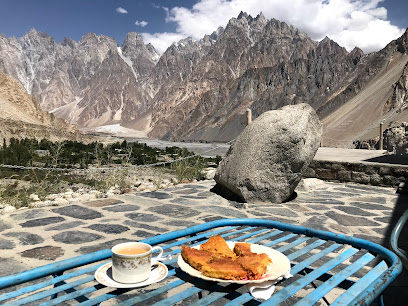
Hidden Paradise Hunza
Experience organic dining amidst breathtaking landscapes at Hidden Paradise Hunza - where every meal is a journey into nature's bounty.

Hotel Summit & Restaurant
Experience authentic flavors and stunning views at Hotel Summit & Restaurant in Skardu - where culinary delight meets natural beauty.

Raja mamtu corner
Experience authentic Pakistani cuisine at Raja Mamtu Corner, a top-rated restaurant in Gilgit-Baltistan known for its unique flavors and welcoming atmosphere.

Cafe Culture Hunza
Discover authentic flavors and breathtaking views at Cafe Culture Hunza - where tradition meets taste amidst stunning landscapes.

Gingerfort cafe
Discover Gingerfort Cafe in Karimabad - where delightful flavors meet breathtaking views of Hunza Valley.

Cafe 1972
Experience the best of local and international cuisine at Café 1972 in Gilgit—your perfect dining destination in Gilgit-Baltistan.

Phander Rest House
Discover serenity at Phander Rest House - your gateway to nature’s wonders in Gilgit-Baltistan.
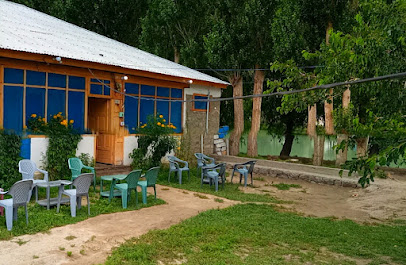
Sivana
Discover Sivana in Gilgit: Where exquisite flavors meet breathtaking river views for an unforgettable dining experience.

Phander View Hotel
Discover tranquility at Phander View Hotel - your gateway to breathtaking landscapes and authentic cultural experiences in Pakistan.
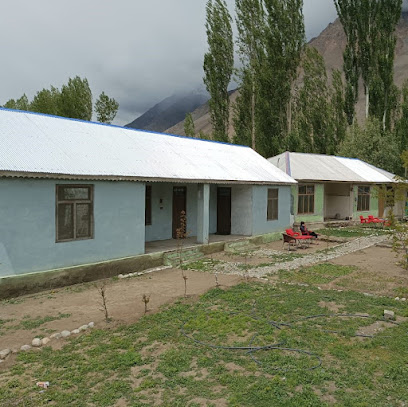
Phander Valley
Explore Phander Valley: A Stunning Retreat Surrounded by Nature's Majesty in Northern Pakistan.
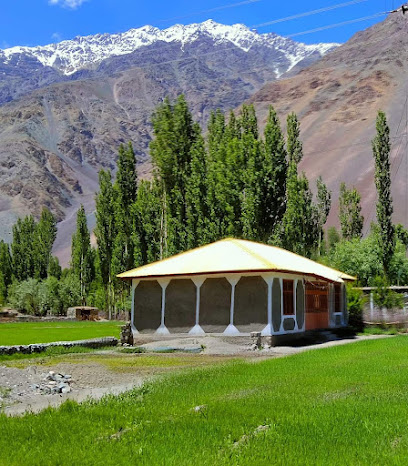
Markets, malls and hidden boutiques
Phander Valley
Discover the pristine beauty and cultural richness of Phander Valley, a hidden gem in Pakistan that offers breathtaking landscapes and unforgettable experiences.

Mohii's Mart
Discover the enchanting flavors of Mohii's Mart, a bakery in Yasin Valley, Gilgit, offering a delightful array of freshly baked goods and traditional sweets.

Hashmii bakery Hundarap
Discover the flavors of Gilgit-Baltistan at Hashmii Bakery in Phander Valley, where every bite is a taste of local tradition.

Hashmii bakery Gulagktori
Explore the exquisite flavors of Hashmii Bakery in Kinisotek, where fresh pastries and local charm await every traveler.

Ahmed General store
Discover local culture and essential goods at Ahmed General Store, a charming spot in Phander surrounded by stunning landscapes.

SadaBahar Tuck Shop
Discover local charm at SadaBahar Tuck Shop in Phander Valley, where authentic products meet the warmth of community hospitality.

Gul Sher General Store
Discover the charm of local culture and essential supplies at Gul Sher General Store in the scenic Phander Valley of Gilgit-Baltistan.

Chohan General store
Discover local treasures and everyday essentials at Chohan General Store in the heart of Gilgit-Baltistan, a must-visit for every traveler.

Jublee Gernal store
Explore the authentic Yasin Valley experience at Jublee General Store, where local goods and warm hospitality await every traveler.

JOHAR GENERAL STORE
Explore Johar General Store in Yasin Valley: Your local shopping destination in the heart of Gilgit-Baltistan's stunning landscapes.

Yasin Departmental Store
Discover the essence of Yasin Valley with a visit to Yasin Departmental Store, your gateway to local treasures and cultural experiences.

Khyber General Store &Cement Agency
Explore the Khyber General Store in Phander Valley for essential goods and a taste of local culture surrounded by stunning natural beauty.
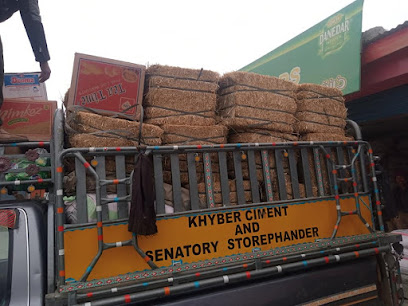
Hussain General Store Shinglate
Experience the charm of Phander at Hussain General Store, your go-to spot for local essentials and a taste of authentic Pakistani hospitality.
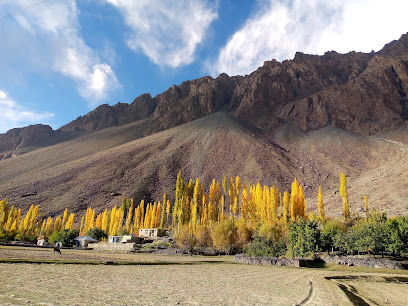
Chitral General Store
Explore unique local products at Chitral General Store in Yasin Valley, the hub of culture and convenience in Gilgit-Baltistan.

الجنت شاپنگ سنٹر
Explore unique clothing styles at الجنت شاپنگ سنٹر in Gilgit, where local culture meets vibrant fashion in a charming shopping experience.

Essential bars & hidden hideouts
HAPPY HOUR
Experience the flavors of Gilgit at Happy Hour Restaurant, where local and international cuisines meet breathtaking mountain views.

Phander Rest House
Experience the breathtaking beauty and tranquility of Gilgit-Baltistan at Phander Rest House, your serene lodge getaway amidst nature.
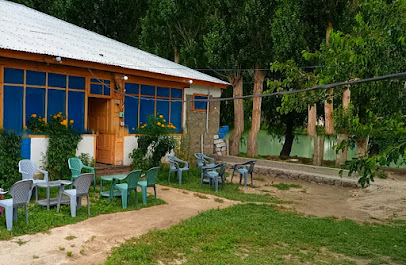
Hill top lodge phander
Experience the perfect blend of nature and comfort at Hill Top Lodge Phander, your ultimate retreat in the stunning landscapes of Pakistan.

PTDC Motel Jandarot
Discover the beauty of Pakistan at PTDC Motel Jandarot, where delicious local cuisine meets breathtaking mountain views.

Phander Valley
Explore the untouched beauty of Phander Valley, a serene escape in Gilgit-Baltistan, where nature meets tranquility.

Lake Inn Phander
Experience the tranquility of Lake Inn Phander, a serene hotel in the breathtaking Phander Valley, perfect for nature lovers and adventure seekers.

Henzal Bayak Shinwari
Experience the authentic flavors of Gilgit-Baltistan at Henzal Bayak Shinwari, where culinary tradition meets breathtaking scenery.

Sangeet Hotel & Restaurant Taus, Pakistan
Experience authentic Pakistani flavors at Sangeet Hotel & Restaurant, a culinary oasis in Yasin Valley, Gilgit-Baltistan.

Barbuchh Restaurant and Guest House
Discover the authentic flavors of Gilgit-Baltistan at Barbuchh Restaurant and Guest House, where culinary tradition meets breathtaking landscapes.
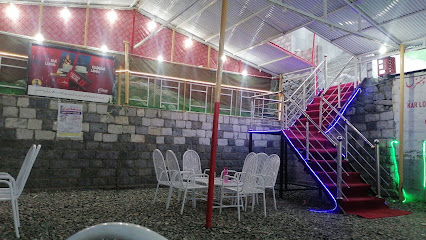
Terrace of Phander Valley
Discover the serene beauty of the Terrace of Phander Valley, a stunning destination in Gilgit-Baltistan known for its breathtaking views and tranquil sunsets.

Ghizer View Hotel & Restaurant
Experience the flavors of Gilgit-Baltistan at Ghizer View Hotel & Restaurant, where stunning views meet exceptional cuisine.
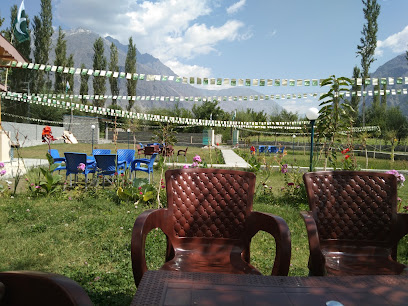
Ghizer Lodge
Experience nature's serenity at Ghizer Lodge, a tranquil retreat by Khalti Lake in the beautiful Gilgit region of Pakistan.

Paradise Hotel & Restaurant
Experience the beauty and tranquility of Gilgit-Baltistan at Paradise Hotel & Restaurant, where comfort meets nature in a picturesque setting.

The Rover by Roomy, Phander
Discover the serene beauty of Phander Valley at The Rover by Roomy, where comfort meets nature in a breathtaking resort hotel.

Phander Green Hotel & Restaurant
Discover family-friendly comfort and breathtaking landscapes at Phander Green Hotel & Restaurant in the heart of Gilgit-Baltistan.

Local Phrases about Phandar Valley
-
- Helloسلام
[salaam] - Goodbyeخدا حافظ
[khuda hafiz] - Yesہاں
[haan] - Noنہیں
[nahin] - Please/You're welcomeبراہ کرم
[barah-e-karam] - Thank youشکریہ
[shukriya] - Excuse me/Sorryمعذرت خواہ ہوں
[maazrat khawah hoon] - How are you?آپ کیسے ہیں؟
[aap kaise hain?] - Fine. And you?ٹھیک ہوں۔ آپ؟
[theek hoon. aap?] - Do you speak English?کیا آپ انگلیش بولتے ہیں؟
[kya aap english boltay hain?] - I don't understandمجھے سمجھ نہیں آیا
[mujhe samajh nahi aya]
- Helloسلام
-
- I'd like to see the menu, pleaseبراہ کرم مینو دیکھنا چاہتا ہوں
[barah-e-karam menu dekhna chahta hoon] - I don't eat meatمیں گوشت نہیں کھاتا
[main gosht nahi khaata] - Cheers!چیرز!
[cheers!] - I would like to pay, pleaseبراہ کرم میں ادا کرنا چاہتا ہوں
[barah-e-karam main ada karna chahta hoon]
- I'd like to see the menu, pleaseبراہ کرم مینو دیکھنا چاہتا ہوں
-
- Help!مدد!
[madad!] - Go away!چلے جاؤ!
[chale jao!] - Call the Police!پولیس کو بلائیں!
[police ko bulaiye!] - Call a doctor!ڈاکٹر کو بلائیں!
[doctor ko bulaiye!] - I'm lostمیں گم ہو گیا ہوں
[main gum ho gaya hoon] - I'm illمیں بیمار ہوں
[main beemar hoon]
- Help!مدد!
-
- I'd like to buy...میں خریدنا چاہتا ہوں...
[main kharidna chahta hoon...] - I'm just lookingمیں صرف دیکھ رہا ہوں
[main sirf dekh raha hoon] - How much is it?یہ کتنا ہے؟
[yeh kitna hai?] - That's too expensiveیہ بہت مہنگا ہے
[yeh bohat mehnga hai] - Can you lower the price?آپ قیمت کم کر سکتے ہیں؟
[aap qeemat kam kar sakte hain?]
- I'd like to buy...میں خریدنا چاہتا ہوں...
-
- What time is it?وقت کیا ہوا ہے؟
[waqt kya hua hai?] - It's one o'clockایک بجے ہیں
[aik bajay hain] - Half past (10)ڈیڑھ بجے
[dairh bajay] - Morningصبح
[subah] - Afternoonدوپہر
[dopeher] - Eveningشام
[shaam] - Yesterdayگزرے کل
[guzre kal] - Todayآج
[aaj] - Tomorrowکل
[kal] - 1ایک
[aik] - 2دو
[do] - 3تین
[teen] - 4چار
[chaar] - 5پانچ
[paanch] - 6چھے
[chhay] - 7سات
[saat] - 8آٹھ
[aath] - 9نو
[no] - 10دس
[das]
- What time is it?وقت کیا ہوا ہے؟
-
- Where's a/the...?کہاں ہے...
[kahan hai...] - What's the address?پتہ کیا ہے؟
[pata kya hai?] - Can you show me (on the map)?کیا آپ مجھے دکھا سکتے ہیں؟
[kya aap mujhe dikhha sakte hain?] - When's the next (bus)?اگلی گاڑی کب ہے؟
[agli gaadi kab hai?] - A ticket (to ....)ایک ٹکٹ (کو ...)
[aik ticket (ko ...)]
- Where's a/the...?کہاں ہے...
History of Phandar Valley
-
The history of Phandar Valley traces back to ancient times when it was inhabited by early settlers who relied on the fertile lands and the Ghizer River for sustenance. Archaeological evidence suggests that the valley was part of ancient trade routes, connecting it to larger civilizations in the region.
-
During the 6th and 7th centuries, Buddhism made its way into the Phandar Valley. The remnants of Buddhist stupas and rock carvings found in the region are a testament to the valley's historical engagement with this spiritual tradition. These artifacts indicate that the valley was once a flourishing center for Buddhist culture and learning.
-
Phandar Valley was a crucial link in the ancient Silk Road network. Traders and caravans passing through the valley brought not only goods but also cultural exchanges. This strategic location facilitated interactions between diverse cultures, contributing to the rich tapestry of Phandar's historical narrative.
-
In the 8th century, Islamic influence began to permeate the region. With the arrival of Muslim conquerors, the valley saw a significant cultural shift. The introduction of Islam led to the construction of mosques and the establishment of Islamic traditions, which continue to influence the local culture and social fabric of Phandar Valley to this day.
-
The valley was once governed by local chieftains and small kingdoms, each leaving their mark on the region's history. The most notable among them was the Kingdom of Yasin, which had a profound impact on the political and cultural landscape of Phandar Valley. These local rulers fostered a sense of community and governance that shaped the valley's historical trajectory.
-
During the 19th century, Phandar Valley came under the influence of British colonial powers as part of the broader political dynamics in the Indian subcontinent. The British presence introduced new administrative practices and infrastructure developments, which left an indelible mark on the valley's history and development.
-
In recent decades, Phandar Valley has seen a surge in tourism, owing to its stunning natural beauty and rich cultural heritage. Modern infrastructure improvements have made the valley more accessible, attracting visitors from around the world. This influx of tourism has brought economic growth and increased awareness of the valley's historical and cultural significance.
Phandar Valley Essentials
-
Phandar Valley is located in the Ghizer District of Gilgit-Baltistan in Pakistan. The nearest major city is Gilgit, which has an airport with regular flights from Islamabad. From Gilgit, you can hire a car or take a local bus to Phandar Valley, which is approximately a 5 to 6-hour drive away. The journey is scenic but involves mountainous roads, so it's essential to travel with an experienced driver.
-
Within Phandar Valley, the best way to get around is by foot or by hiring local taxis. The valley is small and many attractions are within walking distance. For longer trips, you can arrange for a jeep or car hire. Public transport options are limited but local buses do operate between the main villages and towns in the region.
-
The official currency in Pakistan is the Pakistani Rupee (PKR). It's advisable to carry sufficient cash as credit cards and ATMs are not widely available in Phandar Valley. Make sure to withdraw enough money from ATMs in Gilgit or other major cities before heading into the valley.
-
Phandar Valley is generally a safe destination for tourists. However, it is important to remain vigilant and take standard safety precautions. Avoid walking alone at night in unfamiliar areas and keep an eye on your belongings, especially in crowded places. There are no specific high-crime areas targeting tourists, but it is always best to stay aware of your surroundings.
-
In the case of an emergency, the local emergency number is 1122. The nearest medical facilities are in Gilgit, so it is advisable to have travel insurance that covers medical emergencies. There are smaller clinics and pharmacies in the valley where you can get basic medical assistance and over-the-counter medications.
-
Fashion: Do dress modestly, especially when visiting religious sites and local villages. Avoid wearing revealing clothing. Religion: Do respect local customs and traditions. Always ask for permission before taking photographs of religious sites or local people. Public Transport: Do be respectful and give up your seat to elderly passengers. Don't eat or drink on public transport. Greetings: Do greet people with a smile and a handshake. A slight bow of the head is also a sign of respect. Eating & Drinking: Do try local delicacies and accept food offerings graciously. Don't refuse hospitality, as it is considered impolite.
-
To experience Phandar Valley like a local, visit the local markets to buy fresh produce and handmade goods. Engage with the locals, as they are often friendly and willing to share stories about the valley's history and culture. Don't miss the opportunity to visit Phandar Lake, which offers stunning views and is perfect for a relaxing day out. Also, try to attend a local festival to experience the rich cultural traditions of the area.
Trending Landmarks in Phandar Valley
Nearby Cities to Phandar Valley
-
Things To Do in Swat
-
Things To Do in Gilgit
-
Things To Do in Naran
-
Things To Do in Kaghan
-
Things To Do in Abbottabad
-
Things To Do in Murree
-
Things To Do in Skardu
-
Things To Do in Peshawar
-
Things To Do in Islamabad
-
Things To Do in Rawalpindi
-
Things To Do in Kabul
-
Things To Do in Jammu
-
Things To Do in Sialkot
-
Things To Do in Vahdat
-
Things To Do in Dushanbe








